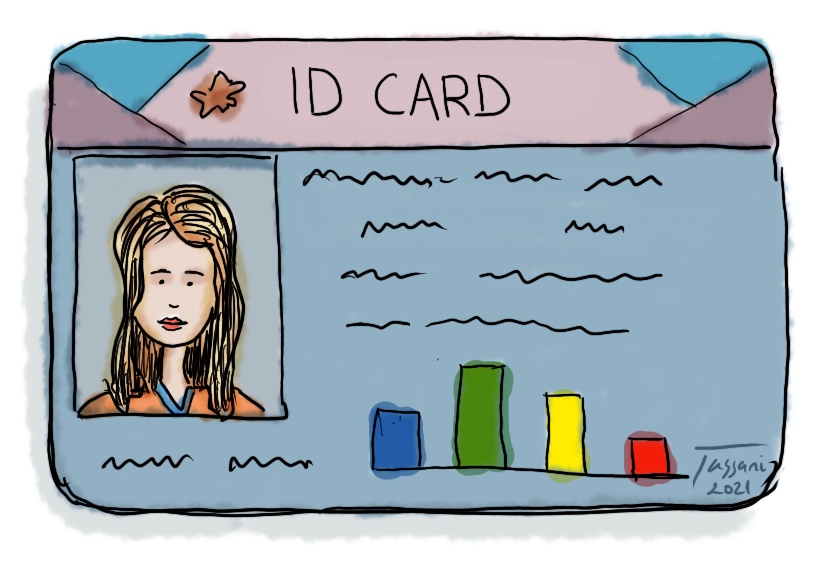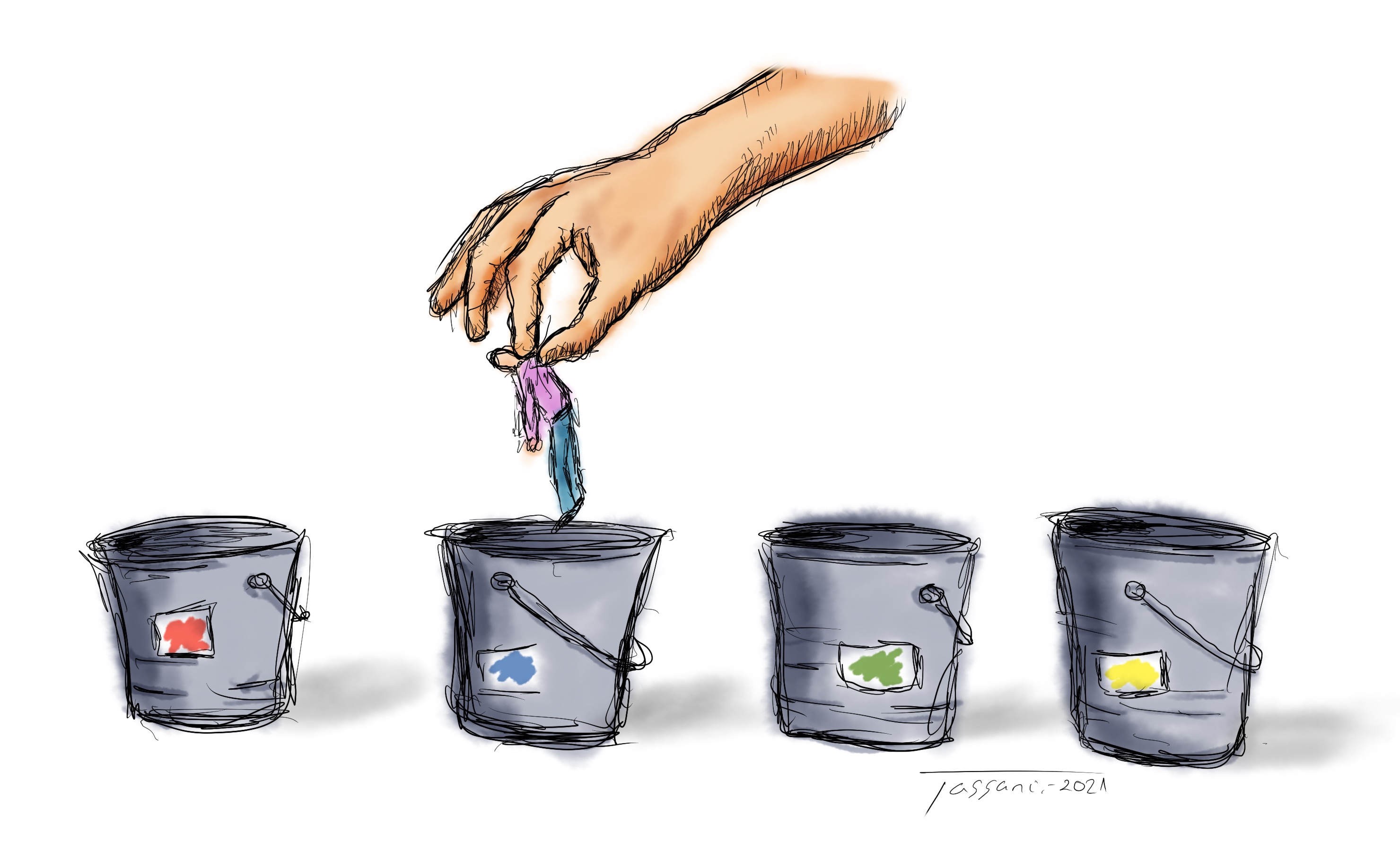Useful nonsense
13 min read
Working as a group is not always easy. Knowing how others prefer to interact and knowing a little bit about yourself may help. That’s the reason why many trainers, facilitators, managers, and Human Resources departments promote the use of psychometric reports.
There are many tools that, after answering between 10 and 100 questions, give your “personality type”, your “interaction style” or your “behavioural preferences”. Usually, when the tool is used in a group, people are asked to share their results, so everybody knows how to interact with the rest.
For some companies, like GitLab, personality assessments are also a tool to build trust.
I am no expert on any of these tools and models but I have used a few. We are going to review some and check what is useful.
Testing systems
The ancient Greeks of medicine and philosophy distinguished four temperaments: sanguine, choleric, melancholic, and phlegmatic. They were a source for Carl Jung’s work on understanding personality around 1920. Most of the well-known theories, models and tests are based on his work.
MBTI
Katharine Cook Briggs and her daughter Isabel Briggs Myers were inspired by Carl Jung’s work and wanted it to have a wider audience, making it more accessible for people to know their personality type. They published the Myers-Briggs Type Indicators around 1960.
MBTI uses four dichotomies:
- How do you prefer to be energised?
Extraversion vs. Introversion (letters E or I) - What kind of information do you prefer to pay attention to?
Sensing vs. iNtuition (letters S or N) - How do you prefer to process information and make decisions?
Thinking vs. Feeling (letters T or F) - What lifestyle do you prefer?
Judging vs. Perceiving (letters J or P)
The test will produce a four-letter result, depending on what preferences you have in each category. You can be things like ISTJ or ENFP. A total of 16 possible combinations are possible.
It is hard to remember the letter combinations but people instructed in MBTI know how rare is type INFJ or how well ISTJ and ESTP work together [1].
DISC
DISC was created by Professor Marston and is also inspired by Carl Jung’s work. Instead of four categories, it uses two:
- people oriented vs. task oriented
- fast paced or active vs. slower paced or reflective (sometimes referred to as extroverted vs. introverted)
This results in four possible combinations, usually identified by colours:
| Colour | Letter | Description | Combination |
|---|---|---|---|
| Red | D | Dominant | Fast paced + task oriented |
| Yellow | I | Influential | Fast paced + people oriented |
| Green | S | Steady | Slow paced + people oriented |
| Blue | C | Conscientious | Slow paced + task oriented |
In DISC, instead of “personality”, they talk about “behavioural style”, and they suggest every person has a natural style, the way we behave naturally, and an adapted style, the way we adapt to work in a certain environment. The natural style, they say, is almost impossible to change, but the adapted style can be trained, and it can be different for different environments, like home and work.
Instead of assigning “your colour”, or “your letter” like in MBTI, they suggest each person has a different value for each of the colours. Usually, there are one or two main colours in a DISC profile.
Insights
In Insights they talk about cool blue and fiery red. Insights is also based on Carl Jung’s theories. Like DISC, it also uses four colours (they talk about colour energies) but the categories are slightly different.

They also provide a “conscious” and “less conscious” collection of values for each of the colours.
| Colour | Insights colour | Description |
|---|---|---|
| Red | Fiery red | Competitive, demanding, determined, strong-willed, purposeful |
| Yellow | Sunshine yellow | Sociable, dynamic, demonstrative, enthusiastic, persuasive |
| Green | Earth green | Caring, encouraging, sharing, patient, relaxed |
| Blue | Cool blue | Cautious, precise, deliberate, questioning, formal |
Social Styles
Social Styles was developed in the 1960s based on behavioural science instead of personality theory. The focus is not on the internal personality but on the observable behaviours. Providing self-awareness is important as in the other models, but in Social Styles it is also important how you are perceived by others. That is the reason why there is a personal self-assessment but also the individual is assessed by their colleagues.
During my Social Styles training I heard for the first time The Platinum Rule, even though I don’t think they invented it. If the Golden Rule says “treat others as you would like to be treated”, the Platinum Rule says “treat others as they would like to be treated”.
Social Styles also uses two dimensions and four colours.
- Assertiveness. How we try to influence the thoughts and actions of others.
- Responsiveness. How we respond to others and express our feelings when relating to others.
This gives, again, four colours:
| Colour | Style | Description |
|---|---|---|
| Red | Driver | High assertiveness and low responsiveness |
| Yellow | Expressive | High assertiveness and high responsiveness |
| Green | Amiable | Low assertiveness and high responsiveness |
| Blue | Analytical | Low assertiveness and low responsiveness |
It seems to be GitLab’s tool of choice.
In a company I was working for, coaching different teams with different needs, each of them gave me a different colour in their Social Styles assessment, evidencing that I was behaving differently.
Other tools
All the tools described are proprietary and in order to use them, you have to pay a fee. Usually, you also need to be a certified practitioner to share the surveys, and you are supposed to explain the tool in a training before giving it to participants. Certifications and fees are their business model in a highly competitive testing market.
I have seen other tools like Enneagram, StrengthFinder, Hogan personality inventory and Hexaco personality inventory, but I haven’t used them. If you are curious, you can find many more [2].
What is good
The book Surrounded by idiots [3] starts with the story that gives its title. A manager who thinks that everybody around him behaves in a stupid way, just because they are different from him. They are not idiots, but different. The book continues explaining how people “really” are, based on DISC but renaming it to DISA (Dominant, Inspiring, Stable and Analytical).
Using any of the mentioned tools has, in my opinion, three exceptionally good outcomes.
First, it gives people the chance to reflect on themselves, to open the door to self-awareness. We are usually trapped in our day-to-day life and we don’t have a chance to question what we do or how we do it, or to consider other ways of behaving.
Second, it opens the eyes to see that people are different. We tend to judge other people based on our own preferences, and it is very difficult to see rationality in other ways of behaving. Reflecting on other people may help us accept them and perform better together.
And third, it gives vocabulary to talk about emotions. It is a topic we are not used to discussing, but when you disguise it with colours, it seems more neutral. Without better words, saying that someone is behaving “too red”, may be a good starting point.
What is not so good
In most of the training sessions I have been on these tools, they remark that they are not about categorising people and putting them in boxes. However, participants end up categorising and labelling people. This is bad because they think someone is a colour. They will judge them based on a stereotype. They will consider that colour cannot be changed. They will start to find explanations based on the colours. And in some cases, it will become an excuse like in “I can try, but you know that I am yellow”.
What’s your Meyers Briggs personality type? I’m Sagittarius.
— A tweet from Simon Wardley
It is hard to believe that there are 4, 12 or 16 types of people. It is terrible to pigeonhole someone and consider they have static characteristics that cannot evolve. Or when you attribute other behaviours just because the results gave a certain colour. A senior manager in a company I was working for said “now I want all the Product Owners tested: we need more reds!”

On the other hand, we all categorise people. It is very hard for our brain to cope with the world’s complexity, so it builds shortcuts to simplify understanding. The problem arrives when we accept the simplification as the truth.
When I see people waiting for their result, and then “their colours” are given, it seems to me like the Sorting Hat in Harry Potter yelling a house name: Gryffindor!
Not the biggest problem in psychometrics but worth mentioning is that the language used in some descriptions could match almost anyone. You can watch a YouTube video where Derek Brown tests the validity of some personality assessment results. He validates the Barnum effect, also known as the Forer effect.
Risks to handle
No perspective is ever completely accurate and reliable. The more perspectives we have, the more clearly we see and understand ourselves and others. These results are useful to perceive diversity in the human condition.
When sharing these tools it is very important to know them well, and I also think it has value to share different tools, just to be aware that there is no single recipe that will give you the instructions to understand people.
All these models are great to perceive that people are different, but I don’t think it is good to think any of them are “the answer”. Just to demystify a little bit, go to Google Images and search for “mbti star wars”, “mbti lord of the rings” or “mbti harry potter”: someone has mapped characters to personality types.
I find these tools extremely useful, once their risks are properly managed. But, anyway, my main colour is blue.
Toni Tassani — 30 June 2022
This article was originally published on 24 May 2021 on the company intranet.